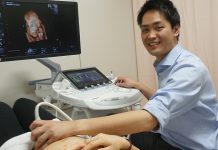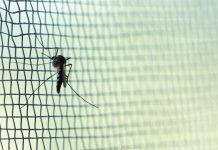Dr Nauf AlBendar, Doctor of Clinical Medicine & Founder of The Womb Effect, introduces spina bifida, the primary cause of foetal loss and substantial disabilities in newborns
Neural tube defects stand for some conditions which occur before birth and during early pregnancy.
What is spina bifida?
Spina bifida is defined as a neural tube defect, including the abnormal closure of the neural tube and the incomplete development of the spinal cord, brain, or meninges around the fourth to sixth week of pregnancy. Consequently, it is the primary cause of foetal loss and substantial disabilities in newborns and is considered a significant public health matter.
It happens in approximately one in every 1,000 births. However, the birth prevalence varies among specific populations and can be as high as one in every 100 births in some areas, such as northern China.
Spina bifida occulta and spina bifida cystica are the two main types of spina bifida.
Spina bifida occulta (closed forms of spina bifida) is a failure of fusion of the vertebral arches covered by the skin and typically does not involve the spinal cord. The defect is usually marked by a patch of hair overlying the affected region.
Spina bifida cystica (open forms of spina bifida) is a more severe type in which neural tissue overhangs through an opening in the vertebral arches to form a cyst or sac. It can occur at any site of the vertebral column, but the most common site of the overhang is the lumbosacral area, where the spine joins the pelvis.
These conditions can be diagnosed prenatally by imaging techniques such as ultrasound and by identification of alpha-fetoprotein levels in the amniotic fluid or serum. Any malformation or abnormality in the vertebral arches can be seen by the twelfth week of gestation.
An infant born with spinal bifida cystica might have lifelong cognitive, mobility, urinary and bowel disabilities. But most infants with spina bifida live long lives.
What are the main causes of the condition?
While the precise causes are not explicitly understood, we know it is multifactorial and involves, as NIH put it, “a combination of environmental and genetic risk factors”. (1)
“A child born with spina bifida may not have any relatives with the condition even though” (2) there is a genetic factor through mutations that naturally arise during the earliest stages of an embryo’s development, which may cause severe neural tube defects.
Various epidemiological studies have shown a connection between high glucose levels and having a child with spina bifida. About 10% of pregnant women with diabetes will have embryos with neural tube defects.
Strong associations were also found between neural tube defects and pesticides, pollutants, disinfectants, preservatives, household, and personal products containing quaternary ammonium compounds or ‘quats’, and “high concentrations of polycyclic aromatic hydrocarbons (PAHs)” (3), which are by-products of burning fossil fuels such as oil and coal.
Other vital factors that could cause spina bifida include maternal obesity, folate deficiency, and some medications.
Prevention & treatment of spina bifida
A variety of nutritional factors influences neural tube defects. The quality of a mother’s diet before and during pregnancy can predispose to malformations of the brain, spinal cord, or orofacial clefts, such as cleft lip and cleft palate.
The best-known nutrient factor is the intake of 400 micrograms of folic acid daily, also known as vitamin B-9, and folate-rich foods before conception continuing through early gestation and beyond, which could decrease the incidence of spina bifida by as much as 70%.
Since about 50% of all “pregnancies are unplanned, it is recommended that all women of childbearing age” (4) take multivitamins containing 400 micrograms of folic acid daily.
Choline is another essential nutrient that impacts brain and spinal cord defects. It plays a significant part in the formation of neurotransmitters and can be found in egg yolks, soy, wheat germ and organ meats.
Even though traditional in-utero and infant surgery is encouraged in some circumstances, there are promising non-invasive treatments of spina bifida in the pipeline, which include cellular therapy and bioengineered reverse thermal gel (RTG) to patch and repair neural tube defects.
References
- https://www.nih.gov/news-events/nih-research-matters/genetic-changes-tied-common-form-parkinsons-disease
- https://www.healthline.com/health/spina-bifida#causes
- https://news.utexas.edu/2011/10/19/study-links-pollutants-to-a-450-percent-increase-in-risk-of-birth-defects/
- https://www.medicineshoppe.ca/en/article/disease/folic-acid-and-pregnancy
Contributor Details
Editor's Recommended Articles
-
Must Read >> Drinking during pregnancy changes baby’s brain
-
Must Read >> Pregnancy, breastfeeding and hormones












